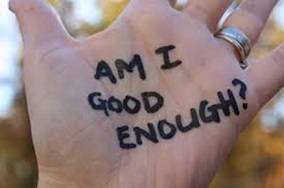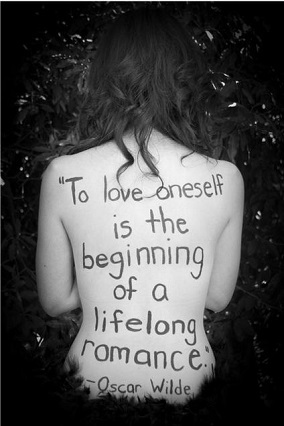No one will love us until we love ourselves
You can’t touch it, but it affects how you feel. You can’t see it, but it’s there when you look in the mirror. You can’t hear it, but it’s there when you talk or think about yourself.
Self-image: one’s concept of oneself; our self-perception, whether we see ourselves as positive or negative or how we project ourselves to other people.
Self-worth: value of an individual regardless of opinion of others.
Esteem: someone or something is important, special or valuable.[i]
Self-esteem, according to Nathanial Branden in his book, The Six Pillars of Self-Esteem (1994) is the confidence in our ability to think and cope with the basic challenges of life. The two components of self-esteem are personal competence and personal worth. In other words, self-esteem is the sum of self-confidence and self-respect. Carl Rogers, humanistic psychologist, believed “every human being, with no exception, for the mere fact to be it, is worthy of unconditional respect of everybody else, he deserves to esteem himself and to be esteemed.”[ii]
What can we do to raise our self-esteem? We can practice living consciously and purposefully; we can practice self-responsibility, self-assertiveness, and increase our personal integrity.
The worst loneliness is to not be comfortable with yourself. – Mark Twain
Abraham Maslow included self-esteem in his hierarchy of human needs. He felt that “the ability to feel self-esteem and personal uniqueness sprang from being loved and embraced by families and communities. As individuals, we naturally wish to excel or be exceptional, to be noticed for our unique talents and capabilities. Once one has some measure of self-esteem and confidence, one gains the psychological freedom to be creative and to grow as well as to be more generous to others.”[iii]
In her article “My Mother, Learning to Live,” Amity Gaige says, “Self-esteem comes quietly, like the truth.”[iv]
No one can make you feel inferior without your consent — Eleanor Roosevelt
Self-esteem is deeply connected to the body; when we feel disconnected from our bodies, it can take a toll on our self-esteem. But the act of writing brings us back into our bodies. Through this re-connection we can improve our self-esteem. Write about a time when your body and mind felt integrated. Write about a situation in which you were esteemed.
Self-acceptance: a refusal to deny or disown any aspect of the self: our thoughts, emotions, memories, physical attributes, sub-personalities, or actions. Self-acceptance is the refusal to be in an adversarial relationship to your own experience. It is the foundation of all growth and change. It is the courage to be for ourselves. The level of our self-esteem cannot be higher than the level of our self-acceptance.[v]
Is self-esteem self-acknowledgement, recognizing and accepting who you really are? Is this the same or different than self-love?
Writing and Self-Esteem
Reading other people’s work will help you learn how to read like a writer and appreciate well-written material. Writing every day will help you practice honing your craft. Gaining confidence comes with the practice of writing. How do you reward yourself for a piece well-written? Write your writing manifesto.
Self-esteem and confidence go hand-in-hand. Confidence in your writing is gained by writing regularly, reading widely, and learning the craft. Write a dialogue with self-doubt or your inner critic. How can you better handle rejection? Describe the feeling of knowing when your work is worthy of submitting to a certain publication. What do you feel in your body when you know others value your work? Write about the ups and downs of writing and overcoming the fear of not being a good writer. Write about rejection or criticism and how they affect your self-confidence, esteem, and ability to believe in yourself as a writer.
Affirmations also rebuild self-confidence. Create an affirmation about believing in yourself. Concentrate on what and how you write well. Write a gratitude list of your writing accomplishments. This doesn’t have to be about publications. This can include anything from having a creative mind and a working computer, to being well-organized and writing for 10 minutes each day.
Writing body narrative is an action you can take to be an active force in your own life. No one can write your story but you.
[i] “The Story on Self-Esteem” Retrieved January 29, 2014 from http://kidshealth.org/kid/feeling/emotion/self_esteem.html
[ii] Branden, N. (1994). The Six Pillars of Self-Esteem. New York: Bantam Books.
[iii] Malsow. A. (1987). Motivation and Personality. (3rd edition). New York, New York, Harper & Row. pp. 21-22.
[iv] Gaige, A. (n.d.). My Mother, Learning to Live. Retrieved January 29, 2014 from http://www.oprah.com/omagazine/Amity-Gaige-on-Self-Esteem
[v] Branden, N. (1994). The Six Pillars of Self-Esteem. New York: Bantam Books.
Debbie spent 30 years as a registered nurse. She became a certified applied poetry facilitator and journal-writing instructor in 2007. She is currently a student in the Johns Hopkins Science-Medical Writing program. Her publications have appeared in Journal of Poetry Therapy, Studies in Writing: Research on Writing Approaches in Mental Health, Women on Poetry: Tips on Writing, Teaching and Publishing by Successful Women, Statement CLAS Journal, The Journal of the Colorado Language Arts Society, and Red Earth Review.






 One puts down the first line…in trust that life and language are abundant enough to complete it.
One puts down the first line…in trust that life and language are abundant enough to complete it.